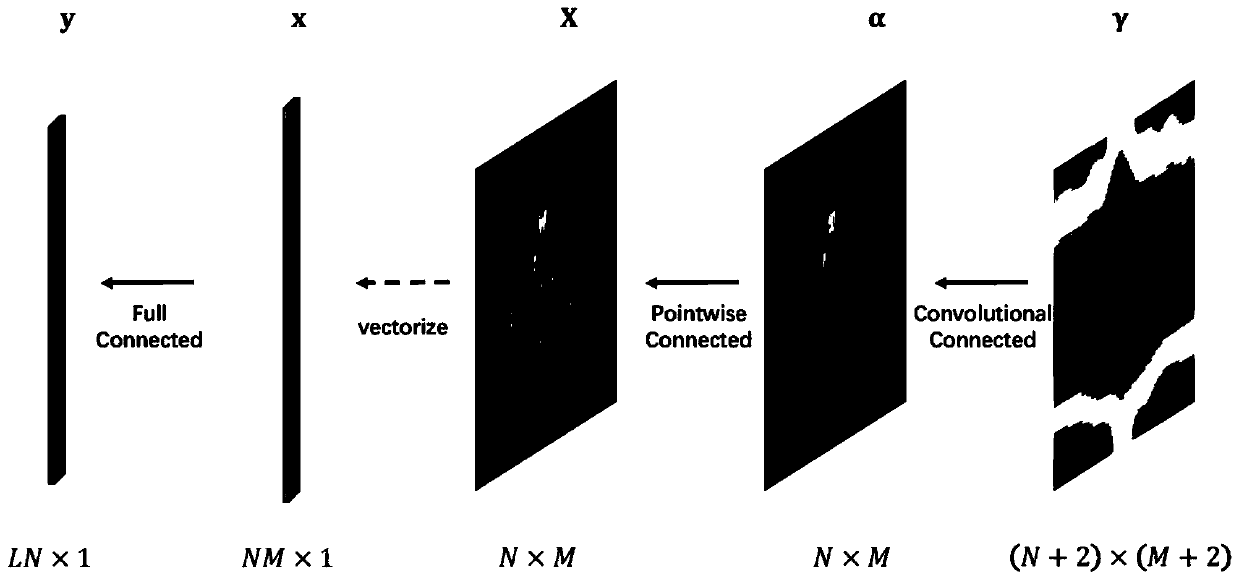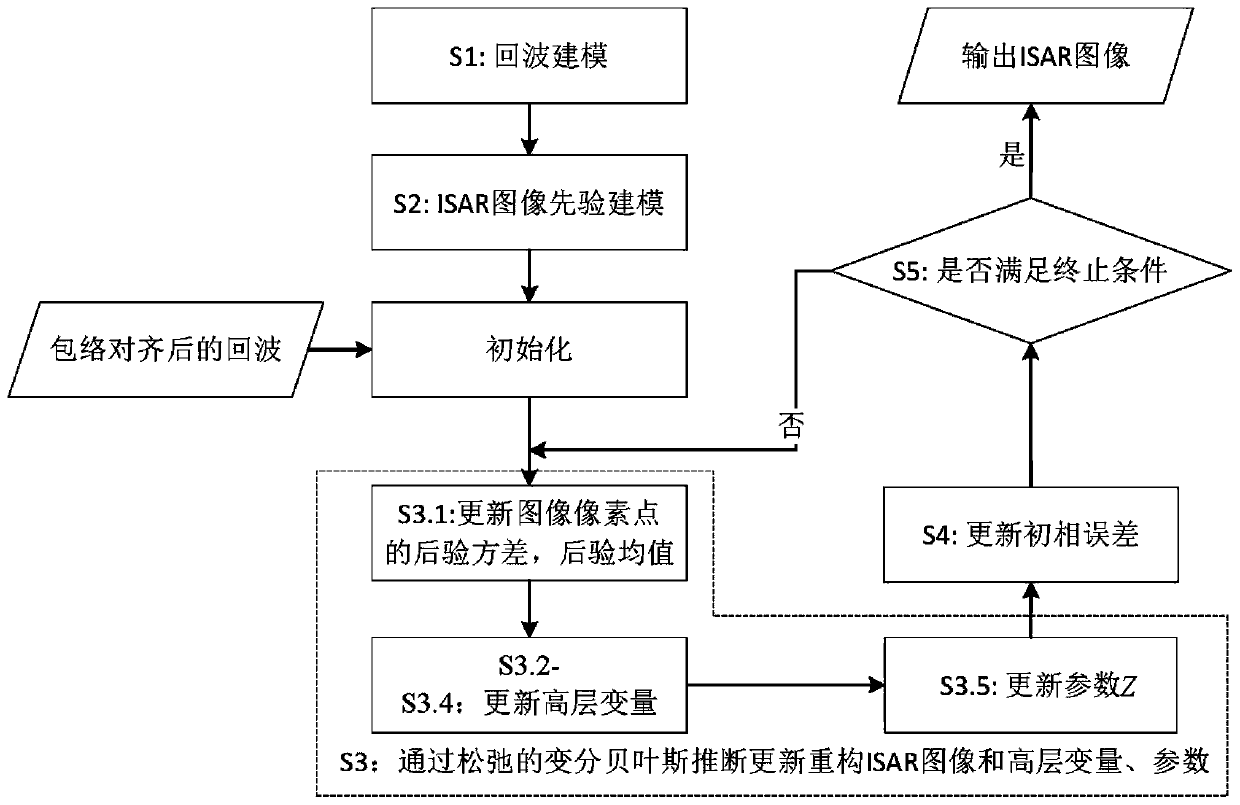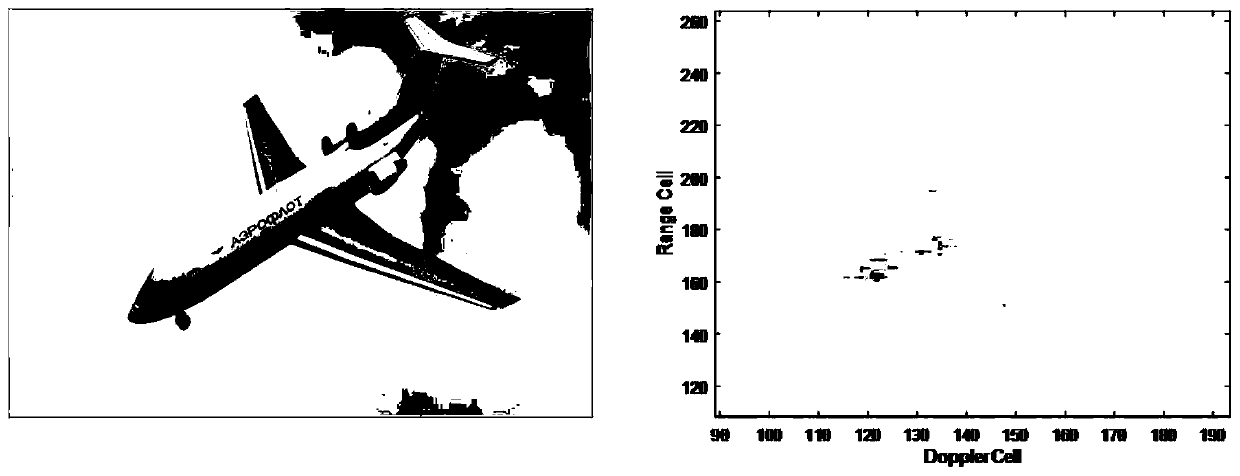SA-ISAR (Sparse Aperture-Inverse Synthetic Aperture Radar) self focusing method based on structure sparsity and entropy joint constraints
A self-focusing and sparse technology, applied in the direction of reflection/re-radiation of radio waves, utilization of re-radiation, measurement devices, etc., can solve problems such as difficulty in meeting actual engineering needs, degradation of ISAR self-focusing performance, and degradation of ISAR image quality.
- Summary
- Abstract
- Description
- Claims
- Application Information
AI Technical Summary
Problems solved by technology
Method used
Image
Examples
Embodiment Construction
[0131] The present invention will be further described below in conjunction with accompanying drawing:
[0132] figure 1 Schematic diagram of the structured hierarchical sparse prior model for ISAR images in S2. X in the figure represents the ISAR image, α and γ represent high-level variables, x represents the ISAR image after vectorization expansion, and y represents the vectorization expansion of the sparse aperture echo after envelope alignment. The solid arrows in the figure represent the dependence of the probability distribution between variables, and the "Convolutional Connected" between α and γ represents α m,n The distribution of depends on γ m+1,n+1 And several adjacent elements, "Pointwise Connected" between X and α represents X m,n The distribution of depends on α m,n , "Full Connected" between y and x represents y i The distribution of depends on all elements of x, and the dotted arrow labeled "Vectorize" between x and X does not represent the depen...
PUM
 Login to View More
Login to View More Abstract
Description
Claims
Application Information
 Login to View More
Login to View More - R&D
- Intellectual Property
- Life Sciences
- Materials
- Tech Scout
- Unparalleled Data Quality
- Higher Quality Content
- 60% Fewer Hallucinations
Browse by: Latest US Patents, China's latest patents, Technical Efficacy Thesaurus, Application Domain, Technology Topic, Popular Technical Reports.
© 2025 PatSnap. All rights reserved.Legal|Privacy policy|Modern Slavery Act Transparency Statement|Sitemap|About US| Contact US: help@patsnap.com



